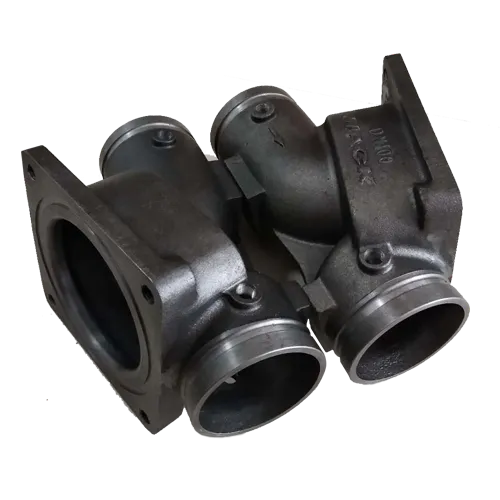Mobile:+86-311-808-126-83
Email:info@ydcastings.com
Exploring Innovative Methods in Metal Casting for Enhanced Manufacturing Efficiency
Metal Casting Techniques An Overview
Metal casting is a process that involves pouring molten metal into a mold to create a desired shape upon solidification. This technique has been a fundamental part of manufacturing for centuries and continues to evolve with technology and material science advancements. Various casting techniques are employed depending on factors such as the type of metal, the complexity of the shape, production volume, and cost considerations. Here, we will explore some of the most common metal casting techniques, their advantages, and their applications.
Sand Casting
Sand casting is one of the oldest and most widely used metal casting techniques. It involves creating a mold from a sand mixture, typically combined with a bonding agent. The process begins by creating a pattern—the replica of the final product—that is placed in the sand to form a cavity. Once the pattern is removed, molten metal is poured into the cavity, filling it, and then left to cool and solidify. After cooling, the sand mold is broken away to reveal the cast part.
Advantages Sand casting is versatile and can accommodate almost any metal, from aluminum to iron. It allows for the production of large and complex parts at a relatively low cost. Additionally, the sand used in the process can often be recycled, which minimizes waste.
Applications Sand casting is used in producing engine blocks, tool and machine parts, and various components in automotive and aerospace industries.
Investment Casting
Investment casting, also known as lost-wax casting, is a precision technique that involves creating a mold from a wax pattern. The wax pattern is coated with a ceramic material to form a shell, which is then heated to remove the wax, leaving a cavity. In the final step, molten metal is poured into this cavity to create the final part.
Advantages This technique allows for high precision and intricate designs, making it suitable for complex components that require excellent surface finish and dimensional accuracy.
Applications Investment casting is commonly used in the jewelry industry, as well as in aerospace and medical applications, where precision and detail are crucial
.metal casting techniques

Die Casting
Die casting involves forcing molten metal into a mold cavity under high pressure. Unlike sand and investment casting, which rely on gravity, die casting allows for rapid production rates, making it ideal for high-volume manufacturing. There are two main types of die casting hot-chamber and cold-chamber casting, depending on the type of metal used and the design of the machine.
Advantages Die casting produces very precise and smooth parts with excellent surface finishes. It also facilitates mass production, reducing costs per unit significantly.
Applications Common applications include automotive parts, appliance housings, and electronic components.
Lost Foam Casting
Lost foam casting is a newer technique that combines elements from both sand casting and investment casting. In this process, a foam pattern is coated with a refractory material and placed in a sand mold. When molten metal is poured in, it vaporizes the foam, effectively creating a cavity that assumes the shape of the original foam pattern.
Advantages This method allows for complex shapes and reduces the need for secondary machining. It also produces a fine surface finish and minimizes waste due to the vaporization of foam.
Applications Lost foam casting is often used for automotive components, particularly for parts requiring high dimensional accuracy and complexity.
Conclusion
Metal casting techniques play a pivotal role in various industries, allowing manufacturers to produce complex and high-quality components efficiently. Each casting method has its own unique set of advantages and applications, making them suitable for different production needs and material types. As technology advances, we can expect to see further innovations in metal casting techniques, improving efficiency and expanding their capabilities in modern manufacturing.
-
Why Should You Invest in Superior Pump Castings for Your Equipment?NewsJun.09,2025
-
Unlock Performance Potential with Stainless Impellers and Aluminum End CapsNewsJun.09,2025
-
Revolutionize Your Machinery with Superior Cast Iron and Aluminum ComponentsNewsJun.09,2025
-
Revolutionize Fluid Dynamics with Premium Pump ComponentsNewsJun.09,2025
-
Optimizing Industrial Systems with Essential Valve ComponentsNewsJun.09,2025
-
Elevate Grid Efficiency with High-Precision Power CastingsNewsJun.09,2025











